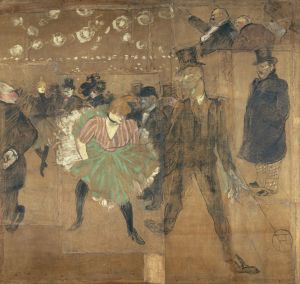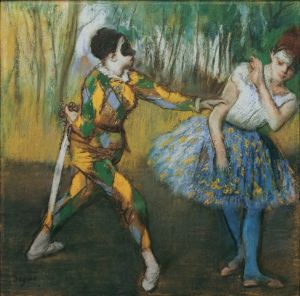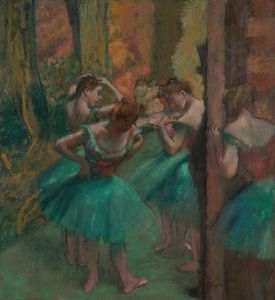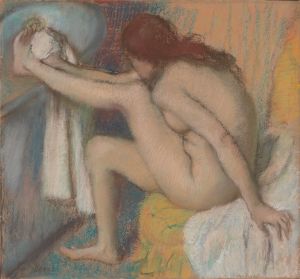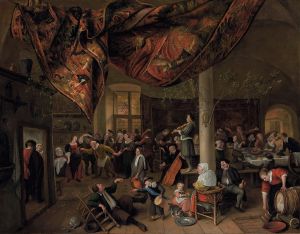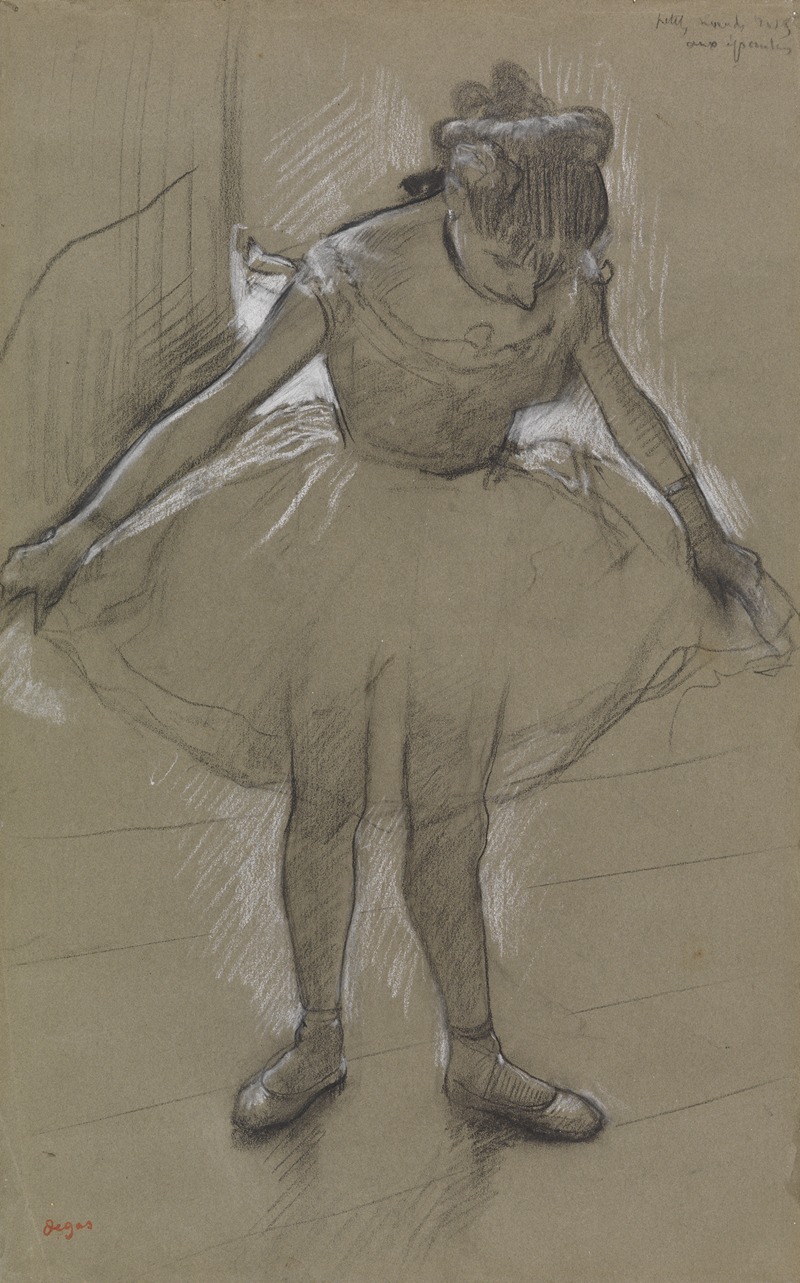
Junge Tänzerin im Gegenlicht
A hand-painted replica of Edgar Degas’s masterpiece Junge Tänzerin im Gegenlicht, meticulously crafted by professional artists to capture the true essence of the original. Each piece is created with museum-quality canvas and rare mineral pigments, carefully painted by experienced artists with delicate brushstrokes and rich, layered colors to perfectly recreate the texture of the original artwork. Unlike machine-printed reproductions, this hand-painted version brings the painting to life, infused with the artist’s emotions and skill in every stroke. Whether for personal collection or home decoration, it instantly elevates the artistic atmosphere of any space.
Edgar Degas, a prominent French artist associated with the Impressionist movement, is renowned for his works that capture the grace and dynamism of dancers. One of his notable works is "Junge Tänzerin im Gegenlicht," which translates to "Young Dancer in Backlight." This painting exemplifies Degas's fascination with the world of ballet and his innovative approach to capturing movement and light.
Degas was born in Paris in 1834 and developed an early interest in art, studying at the École des Beaux-Arts and spending time in Italy to study the works of the Renaissance masters. His artistic career spanned the latter half of the 19th century, a period marked by significant changes in art, society, and technology. Degas's work is often associated with Impressionism, although he preferred to be considered a realist. His focus on contemporary subjects, particularly the ballet, set him apart from many of his contemporaries.
The theme of dancers is a recurring motif in Degas's oeuvre. He was captivated by the behind-the-scenes world of the ballet, often depicting rehearsals, performances, and the everyday lives of dancers. His works are characterized by their innovative compositions, use of unusual perspectives, and a keen interest in the effects of light and movement.
"Junge Tänzerin im Gegenlicht" is a testament to Degas's skill in capturing the ephemeral nature of dance. The painting showcases a young dancer, illuminated by backlighting, which creates a striking contrast and highlights the contours of her form. This technique emphasizes the dancer's grace and poise, while also conveying a sense of movement and fluidity. Degas's use of light and shadow in this work is particularly noteworthy, as it demonstrates his ability to manipulate these elements to enhance the overall composition and mood of the piece.
Degas often employed a variety of media in his works, including oil paints, pastels, and charcoal. His experimentation with different techniques allowed him to achieve a range of textures and effects, which are evident in "Junge Tänzerin im Gegenlicht." The painting reflects his meticulous attention to detail and his dedication to capturing the essence of his subjects.
Throughout his career, Degas's work was both celebrated and critiqued. While some appreciated his innovative approach and the beauty of his compositions, others were less enthusiastic about his focus on modern life and his departure from traditional academic styles. Despite this, Degas's influence on the art world is undeniable. His exploration of movement, light, and everyday subjects paved the way for future generations of artists and contributed to the evolution of modern art.
"Junge Tänzerin im Gegenlicht" remains a significant example of Degas's artistic legacy. It encapsulates his fascination with the ballet and his mastery of capturing the interplay of light and form. Today, Degas's works continue to be celebrated for their beauty, innovation, and insight into the world of dance and the human experience.






